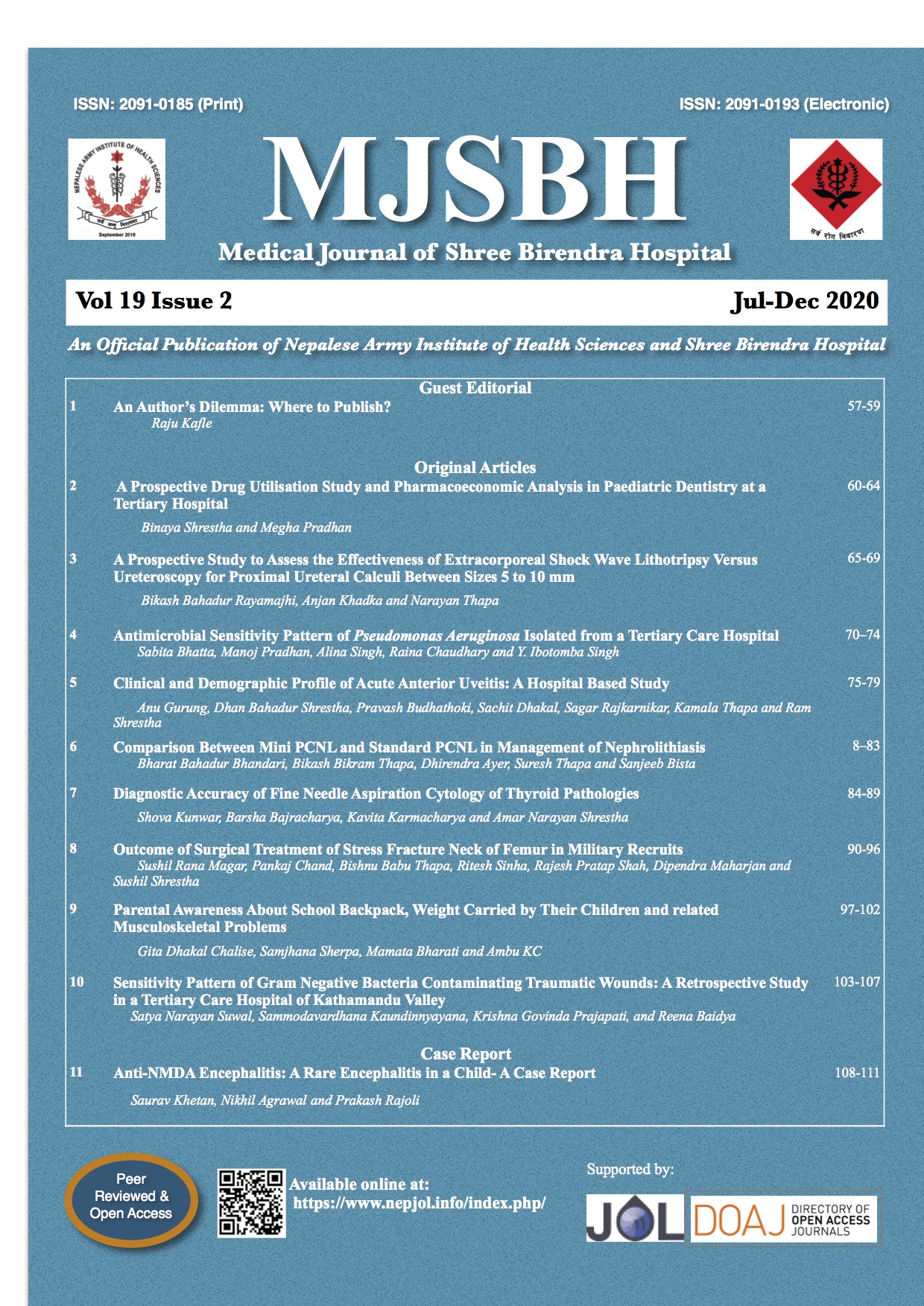A Prospective Study to Assess the Effectiveness of Extracorporeal Shock Wave Lithotripsy Versus Ureteroscopy for Proximal Ureteral Calculi Between Sizes 5 to 10 mm
DOI:
https://doi.org/10.3126/mjsbh.v19i2.27535Keywords:
Lithotripsy, Stents, Uretral Calculi, UreteroscopyAbstract
Introduction: There are various international guidelines for the surgical treatment of upper ureteral calculi. For upper ureteral stone of less than 10 mm size, ESWL and URS are regarded as first line treatment. However, there is lack of national guidelines for appropriate surgical options for such stone in our settings.
Methods: The study was prospective comparative type involving 100 patients who were divided into ESWL and URS groups comprising 50 patients in each. ESWL and URS were performed after confirmation of stone size with ultrasonography and non-contrast enhanced computed tomography. All patients underwent X-ray KUB at one week and six weeks post procedure for confirmation of stone clearance. Those with residual calculi of size < 5 mm were considered stone free. Statistical analysis was done using Graph pad prism version 6.
Results: The mean age of patients in ESWL and URS groups were 41.28 ± 15.3 years and 42.84 ± 16.1 years respectively. The male to female ratio was higher in ESWL group. The mean size of the stone pre ESWL was 8.58 mm and pre URS was 8.44 mm. The percentage of stone clearance at one week and six weeks for ESWL was 56% and 90% respectively whereas for URS, it was more than 90% at both one week and six weeks. The complications were higher with URS (20%) than ESWL (8%).
Conclusions: The ESWL and URS are equally effective in stone clearance. The duration is longer with ESWL and the complications were more in URS group.
Downloads
Downloads
Published
How to Cite
Issue
Section
License
This license enables reusers to distribute, remix, adapt, and build upon the material in any medium or format for noncommercial purposes only, and only so long as attribution is given to the creator.




